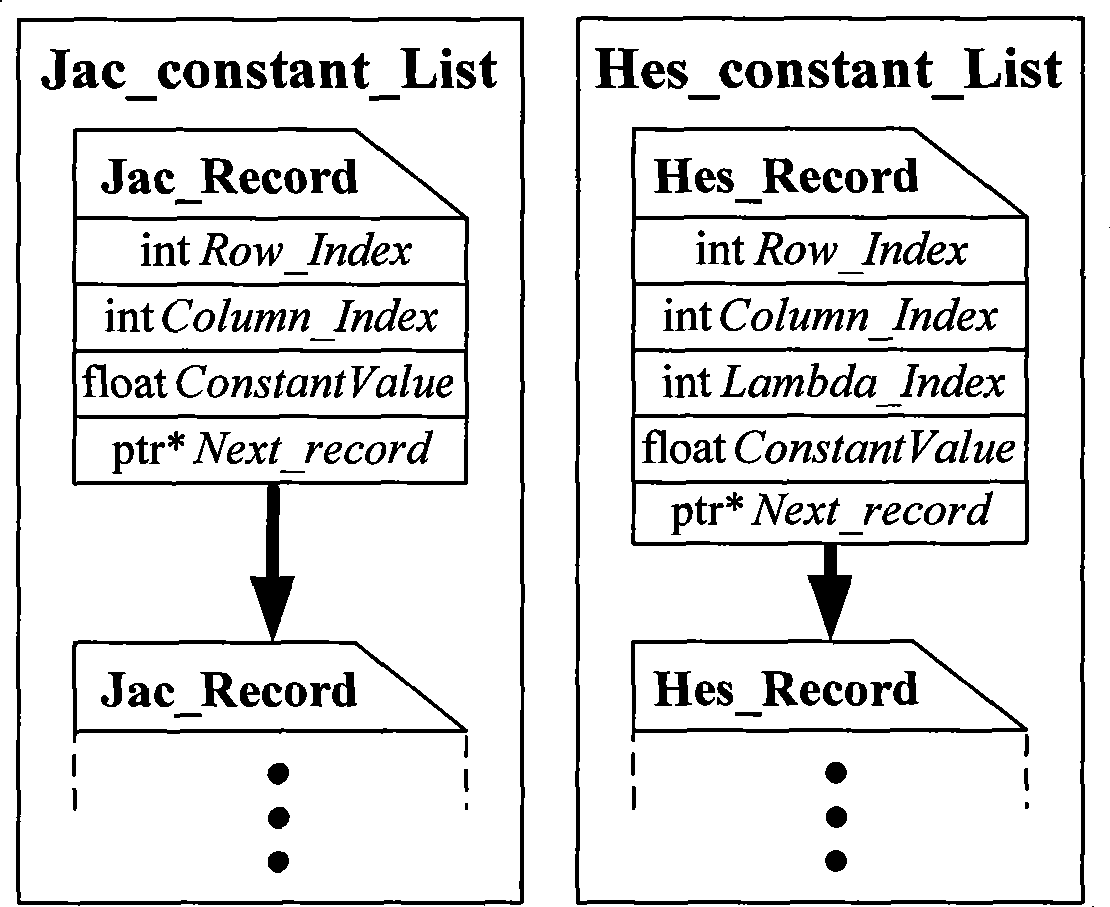Method for optimizing electric power system tide base on part automatic differential technology
A technology of automatic differentiation and optimization methods, applied in information technology support systems, system integration technology, electrical components, etc., can solve problems such as insufficient flexibility and slow calculation speed, so as to avoid repeated calculations, increase calculation speed, and improve convenience and the effect of flexibility
- Summary
- Abstract
- Description
- Claims
- Application Information
AI Technical Summary
Problems solved by technology
Method used
Image
Examples
Embodiment 1
[0045] consider as figure 2 In the example power system shown, one embodiment of the present invention is used to optimize the power flow of the system, and each step is described as follows:
[0046] Step 1: Calculate the grid admittance matrix (results omitted), and set the optimization variable of the power flow optimization problem as x, which includes [P G , Q G , V e , V f , X c ], where P G and Q G are the active output and reactive output of the generator respectively, V e and V f are the real and imaginary parts of the voltage at each node, X c Customize the control variables of the model for other users in the system.
[0047] The objective function is set as the minimum fuel cost of system power generation (1), where α is the economic coefficient of each generator.
[0048] f ( x ) = Σ ( α i 2 ...
Embodiment 2
[0083] This embodiment uses the same objective function, constraint conditions and numerical optimization algorithm as in Embodiment 1, considers multiple groups of test power systems as shown in Table 2, and uses the power flow optimization method based on partial automatic differential technology to optimize it, and at the same time for the convenience For comparison, compare the calculation efficiency of the existing manual programming and all automatic differentiation methods with this embodiment, and the results are shown in Table 3.
[0084] Table 2 Summary of Test System
[0085]
[0086] Table 3 Comparison of computational efficiency of power flow optimization methods
[0087]
[0088] According to the data in Table 3, the CPU time of all automatic differentiation is about 2-3 times of manual programming, while the partial automatic differentiation method is only 1.2-1.3 times of manual programming. Therefore, the power flow optimization method based on the part...
Embodiment 3
[0090] This embodiment adopts the same objective function, constraint conditions and numerical optimization algorithm as in Embodiment 1. On the basis of the CASE2383 test power system shown in Embodiment 2, a high-voltage direct current transmission system (HVDC) and a static var compensator are respectively added. (SVC) and thyristor controlled series compensator (TCSC). These new power electronic devices mentioned above will be treated as user-defined models in this embodiment, as shown in Example 1, the control variable x c Add it to the optimization variable x, and realize the integration of the original algorithm to the user-defined model through the self-defined constraints (3) and (7). Table 4 shows three groups of power flow optimization calculation examples including the above user-defined models, and gives the percentage of CPU time spent on processing user-defined models.
[0091] Table 4. Power flow optimization results considering user-defined models
[0092] ...
PUM
 Login to View More
Login to View More Abstract
Description
Claims
Application Information
 Login to View More
Login to View More - R&D
- Intellectual Property
- Life Sciences
- Materials
- Tech Scout
- Unparalleled Data Quality
- Higher Quality Content
- 60% Fewer Hallucinations
Browse by: Latest US Patents, China's latest patents, Technical Efficacy Thesaurus, Application Domain, Technology Topic, Popular Technical Reports.
© 2025 PatSnap. All rights reserved.Legal|Privacy policy|Modern Slavery Act Transparency Statement|Sitemap|About US| Contact US: help@patsnap.com



